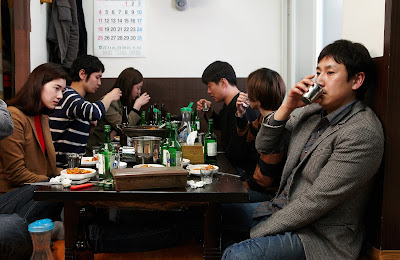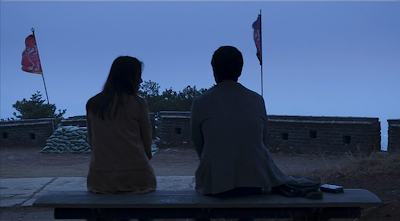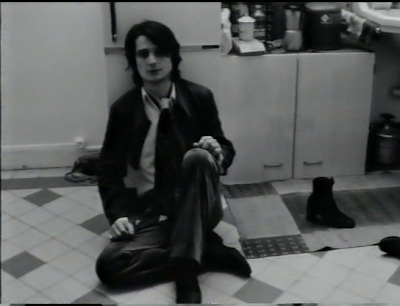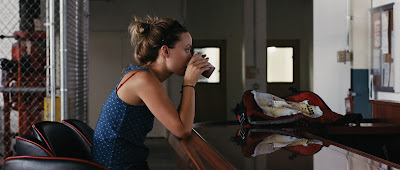Wine is a great danger, especially because it doesn’t bring truth to the surface. Anything but the truth, indeed: it reveals especially the past and forgotten history of the individual rather than his present wish; it capriciously flings into the light also all the half-baked ideas with which in a more or less recent period one has toyed and then forgotten; it ignores the erasures and reads everything still legible in our heart. And we know there is no way of canceling anything there radically, as you can cancel a mistaken endorsement on a promissory note. All our history is always readable there, and wine shouts it, overlooking whatever life has subsequently added.
Italo Svevo, Zeno’s Conscience
By some wonderful coincidence I wound up seeing Joe Swanberg’s Drinking Buddies (2013) and Hong Sang-soo’s Nobody’s Daughter Haewon (2013) over the course of the same day (or, almost: I watched the former sometime after midnight yesterday; the latter around noon today). The work of Swanberg and Hong is strikingly similar in significant ways (both are prolific chroniclers of the aimless wanderings of young twenty- to thirty-somethings, paying close attention to their romantic entanglements as well as to their professional aspirations; they use improvisation as an integral component of their creative processes, with different but comparable effects; and even though Hong is about twenty years older than Swanberg, both belong to a generation of filmmakers who have wholly embraced digital filmmaking) and their latest films convey a desire to emphasize the role that alcohol plays in the lives of their characters, not to treat it as a minor detail to be largely ignored (as in most films, where all young people drink, after all), but rather as an important part of the everyday existence of these individuals, whose dealings with others and with themselves are affected to a large extent by their consumption of booze.
I discovered both of these filmmakers last year when I saw a film by each of them (Hong’s The Day He Arrives [2011] and Swanberg’s Nights and Weekends [2008]) before really delving into their work over the last few months. I have to admit that I haven’t been that impressed by all of Swanberg’s films (his collaborative efforts are especially juvenile, such as the awful Autoerotic [2011]), although at his best (as in Hannah Takes the Stairs [2007] or Drinking Buddies) he reveals a personal vision quite distinct from that of his fellow mumblecore filmmakers (Andrew Bujalski, the Duplass brothers, etc.): his films are truly intimate and heartfelt; to use a famous distinction (Andrew Sarris alludes to it in his discussions in The American Cinema), we might say that he’s a warm filmmaker whereas Bujalski is cold. Hong, too, is in some sense a cold cineaste, which is surely due not only to his personal temperament but also to the fact that he’s much older than the typical protagonist of his films, and his work is much more formally assured and precise than Swanberg’s.
Hong’s films are notorious for the amount of alcohol imbibed in them: there’s always at least one scene where his protagonist, usually a filmmaker or an academic or both (his films are sometimes set in film departments and take as one of their subjects the intrigues that brew there), gets drunk on soju and embarrasses himself in front of his colleagues or else a girl he is interested in romantically, and with whom he probably has a long and painful history. Before Drinking Buddies, on the other hand, I can’t recall a film by Swanberg where alcohol played as large a role as it does here (although, obviously, there were occasionally party sequences with beers aplenty and romantic moments initiated with the help of a wine bottle): two of the main characters work at a small brewery in Chicago (the city where, incidentally, Hong studied at the Art Institute and where Swanberg has set many of his films) and bottles of beer are featured prominently in almost every scene. (There’s also much more time devoted to the way the brewery functions than would be thought necessary in a typical film of this sort). The characters not only partake after work when they meet up at a bar, but also at lunch and at other times of the day. When Kate (the character played by Olivia Wilde) gets to her boyfriend’s (Ron Livingston) apartment after having spent a considerable amount of time at a bar, the first thing she does is grab a beer from the refrigerator, before scolding him playfully for not having finished the bottles she brought him from work. This small detail (that Kate loves beer, whereas Chris prefers wine) retroactively explains the growing rift between them. A similar dynamic operates between her coworker Luke (Jake Johnson) and his longtime girlfriend Jill (Anna Kendrick): there’s a scene where he gets home, asks her twice if she would want anything to drink since he’s getting a beer, she says no, and then later that same night she decides to bring up the subject of marriage while in bed. Swanberg, through these subtle parallels, is making a connection between Kate and Luke without making everything excessively tidy, as in most romantic comedies: whatever the disagreements between Luke and Jill may be, their relationship is much more solid than the one Kate is in. One of the loveliest moments of the film, which highlights Kate’s longing for a different type of connection than she has with her boyfriend, involves her getting out of bed at Chris’ cabin where the four of them are spending the night (he’s already sleeping) and going downstairs to hang out with Luke and Jill, who are up playing cards and laughing and drinking beers.

The titular character of Hong’s film is a young acting student played by Jung Eun-chae. The film follows her for three days in early spring (though, importantly, not consecutive days; there are lapses: March 21, then March 27, and finally April 3). Alcohol only plays an important dramatic role in the first of these days, although it is not completely absent in the other two. Critic Mike D’Angelo, who didn’t like the film very much, joked that it could aptly be called Lady Alcoholic. In the first of the film’s marvelous extended and drawn-out sequences, we see Haewon spend the afternoon with her mother, who is leaving for Canada the very next day. Their walk through the city demonstrates quite clearly that few filmmakers since Eric Rohmer know how to use specific locales recurrently and also public spaces as well as Hong (José Luis Guerín’s Strasbourg in En la ciudad de Sylvia [2007] is an obvious exception); there are moments here that are as beautiful as certain sequences in La femme de l’aviateur (1981). Saddened by the thought of her mother’s departure, Haewon decides to call her ex-boyfriend (Lee Sun-kyun), a married film director who has a kid and also teaches at her school. They meet up and, just before going into a restaurant, they spot several of Haewon’s classmates; unsure whether they have been seen, they decide it’s best to join them. What follows is yet another flawless example of what is perhaps the signature scene in a Hong film: a table dividing the frame, with the characters facing each other (their gaze directed either to the off-screen space on the right or left) and conversing and drinking for several minutes without a single cut. Here the shot lasts over nine minutes and during that time Haewon (who entered the restaurant with a defiant cry: “Fine! I’m drinking!”) predictably gets drunk, glances uncomfortably at the professor, while also trying to avoid revealing that there is anything going on between them to the other students; they, in turn, speak badly of her when she goes to the bathroom after downing several shots of soju in quick succession.
While the scene just described accurately and painfully depicts the process of drinking with others and the inherent conflicts which that situation involves (beautifully conveyed in the Svevo quote at the beginning and to which it would be foolish of me to attempt to add anything), the second instance of Haewon drinking is a sort of private ritual. It takes place towards the end of the film at the same park where both she and the professor spent the whole of the second day, and she has just effectively ended her relationship with him. She finds a man drinking soju by himself (the same man who, on that previous occasion, had spoken to the professor and encouraged him to make things right with Haewon) and asks him if she could have a glass; she drinks two. Before leaving the park she shares one final moment with the professor, who she sees sitting on a bench crying. It of course remains an open question what might happen next, especially since, at that precise moment, Haewon might not be at her most lucid for obvious reasons. What matters are the continuous attempts to understand that other person and, more importantly, to comprehend oneself. It’s also worth pointing out, as a sort of conclusion, that this penultimate shot of Nobody’s Daughter Haewon literally almost mirrors the final one of Drinking Buddies, with one important difference. Swanberg, who is making a fairly traditional comedy (although it’s difficult not to point out how special it is when compared to the films it superficially resembles), can show the expression on his characters’ faces and this ending benefits greatly from the way they gradually come to realize that things might turn out okay. Hong, who is after something different and largely indefinable, does well to keep this direct view partially hidden.






